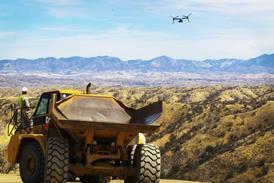The UK Air Accident Investigation Branch (AAIB) has launched an investigation into an accident in which a British Airways Boeing 747-400 sustained significant damage in a "heavy landing", but continued to be flown on two revenue flights before the extent of the damage to the aircraft was realised.
During the heavy landing at Lilongwe, Malawi, on 5 April, the airframe suffered a deceleration of 2.85g , causing "skin damage" on both sides of the fuselage aft of the wing, "large areas of quilting" on the underside of the rear fuselage and "damage to the engine pods", according to a mandatory occurrence report (MOR) filed with the UK Civil Aviation Authority. Two passengers on board sustained "minor injuries".
BA says that the aircraft (G-BNLF) was "-inspected at Lilongwe by a BA engineer-who followed Boeing's heavy-landing checks". The aircraft was cleared for service, and flew to London Gatwick airport via Lusaka, Zambia. The two crews who operated the damaged aircraft "-reported no problems", according to BA.
After inspection at Gatwick, the aircraft was withdrawn from service and ferried to the carrier's Heathrow maintenance base where it is undergoing repairs costing several million pounds sterling. BA says that the aircraft will not re-enter service until "early June".
According to the Lilongwe MOR, the pilots "-lost visual contact" with the runway shortly before touchdown, in heavy rain. The aircraft "bounced" on the runway, and the flightcrew executed a go-around, followed by a normal landing. The possibility of windshear as a factor in the incident is being investigated.
The aircraft's flight-data recorder reveals "no indication of a flare, and a slight pitch-down shortly before touchdown", says the MOR.
The aircraft's ground-proximity warning system issued a "sink-rate" alert just before touchdown.
Source: Flight International























